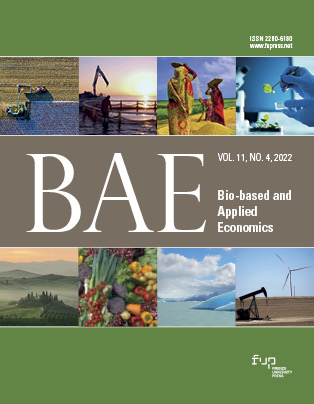Published 2023-05-03
Keywords
- Greenhouse gas mitigation,
- Agricultural economics,
- Input-output modelling,
- Microsimulation
How to Cite
Copyright (c) 2022 Cathal Geoghegan, Cathal O'Donoghue, Jason Loughrey

This work is licensed under a Creative Commons Attribution 4.0 International License.
Abstract
Greenhouse gas (GHG) mitigation measures are currently being implemented in the agricultural sector across the globe. Questions have been raised about the distributional and spatial impacts of agricultural emissions mitigation policies, especially at the local level. This study examines the local impact of a low-income farming sector, beef farming, in a typical Irish beef farming county, County Clare. Input-output analysis reveals that Clare beef farmers purchase the vast majority of farm inputs within the county, with intra-county suppliers providing 90% of their inputs and overheads. We examine the impact of reducing the size of the beef herd in Co. Clare as a direct consequence of meeting national GHG emissions targets by 2030. Taking direct, indirect, and induced effects together, there is an €18.4 million reduction in economic activity in 2030 following the decrease in the beef herd with €14.72 million of that reduction taking place within the Mid-West region.






